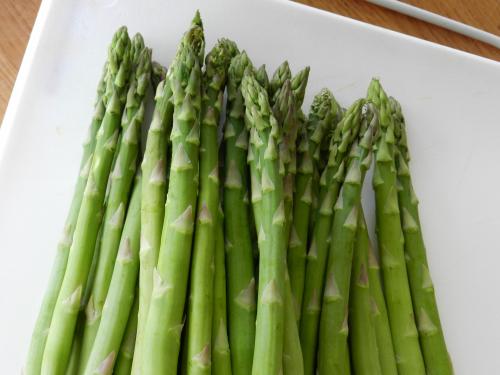Preserving spring asparagus
Safety first when preserving asparagus for later use.
Spring is here, and that means asparagus will be poking its head up through the ground. Asparagus is a perennial favorite when it comes to the first vegetables of spring.
poking its head up through the ground. Asparagus is a perennial favorite when it comes to the first vegetables of spring.
Asparagus is rich in vitamin B6 calcium, magnesium and zinc. Since it is 93 percent water, asparagus is low in calories and very low in sodium. Asparagus is a very good source of dietary fiber.
When harvesting asparagus, it is important to gather tender young shoots. The larger and taller the shoots are, the woodier a product. However, these older shoots should not be discarded. They can be peeled and enjoyed as well.
Michigan State University Extension says that asparagus can be preserved for later use by freezing, canning, pickling or drying. The techniques used depend upon what the later use of the asparagus is. For the fresh-from-the-garden flavor, freezing is ideal.
To freeze asparagus it is necessary to blanch the young spears. Preparing the asparagus for freezing requires that young tender spears be selected. The stalks should be washed, trimmed and sorted according to size. Cut the spears to fit the containers for freezing. Water blanching requires the water to be boiling in a kettle. Tender small spears require a blanching time of two minutes, medium size spears need three minutes and large spears need four minutes. Cool quickly in ice water, then drain and package leaving no airspace in the rigid container.
A technique for individual size pieces is to drain and pat the spears dry. Next, arrange the spears or pieces on a cookie sheet. Then place the cookie sheet in the freezer until the pieces are frozen. Finally, put the frozen pieces in plastic bags making sure there is no air trapped in the bag and put in the freezer.
To can asparagus, pressure canning is required. Select tightly closed spears that are four to six inches in length. Wash thoroughly and trim off the scales and tough ends. Then wash again. The spears can be cut into one inch pieces or left whole (four to six inches).
For the raw pack technique, pack the asparagus tightly into hot jars, leaving one-inch headspace. If salt is desired, put 1/2 teaspoon of salt into pint jars or one teaspoon of salt into quart jars. Fill the jars with boiling water leaving one-inch headspace. Remove the air bubbles, wipe the rim and adjust the pretreated lids and process.
Processing can be done in a dial gauge pressure canner at 11 pounds of pressure or in a weighted gauge pressure canner at 10 pounds of pressure. The processing times are 30 minutes for pints and 40 minutes for quarts.
Spring has arrived! Why not preserve spring’s first vegetable of the season, asparagus, today?



 Print
Print Email
Email

